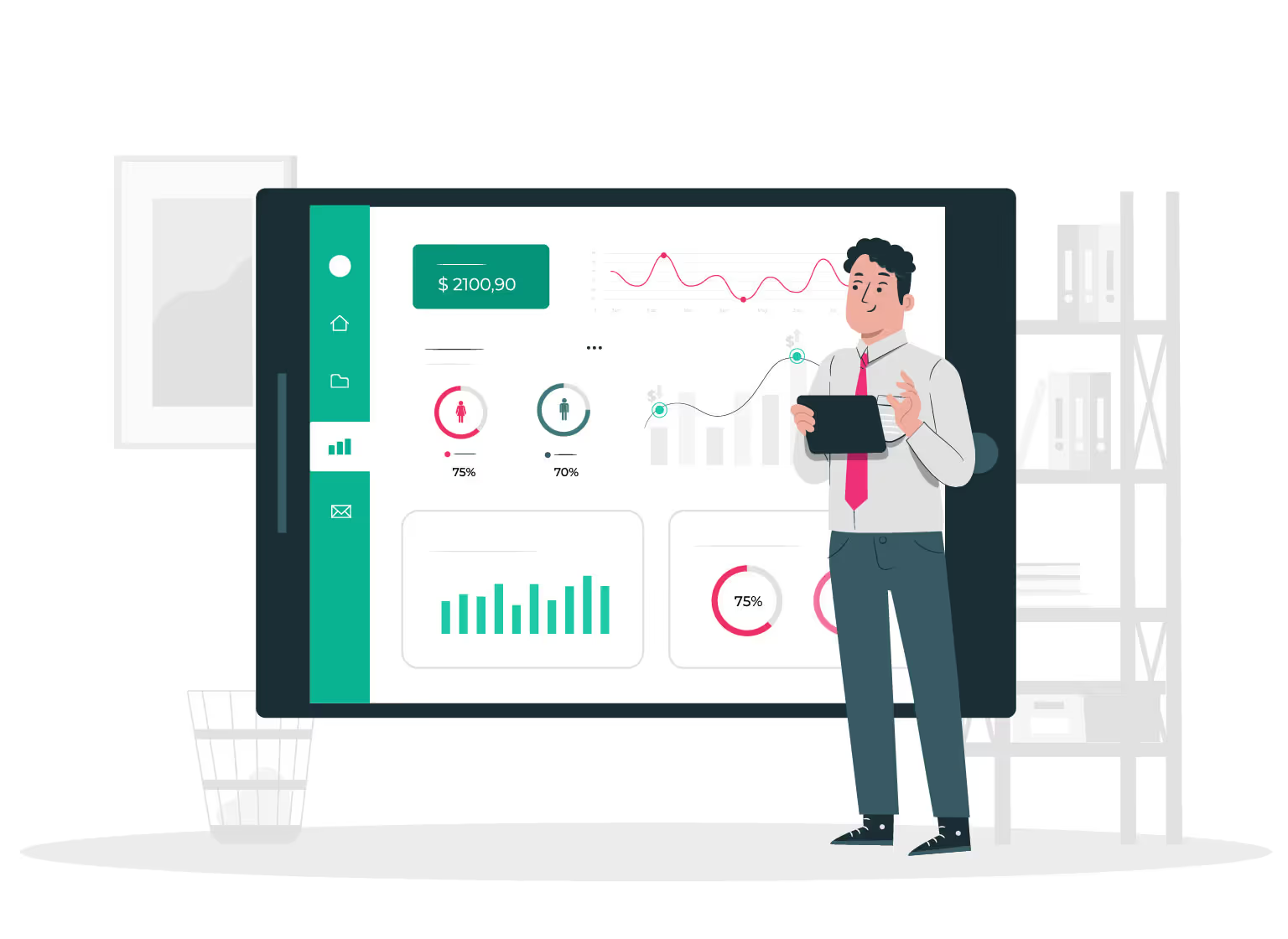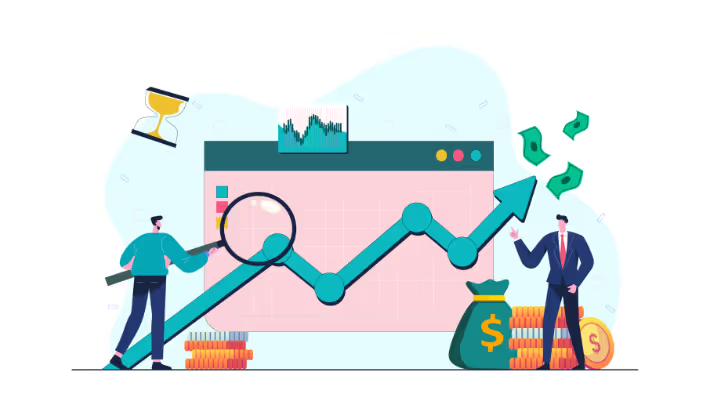
Blog
ICM Software vs SPM Software: The Impossible Choice?
July 25, 2022


Key Insights
There is no denying that the role of a sales leader is becoming increasingly challenging day by day.
Growth leaders are faced with the daunting task of achieving aggressive goals in a remarkably short period of time to combat cut-throat competition.
Another important realization is that data is everything! With digital transformation taking hold, there is no doubt among sales leaders that data-led approaches to sales strategy are the way to go. However, amidst a wide range of tools and tasks, it becomes challenging for leaders to prioritize, especially when it comes to choosing between ICM software's and SPM software's. This is particularly crucial in optimizing the overall sales order management process.
Two terms that find their way into every sales related conversation are ICM and SPM. But, what exactly is the difference between these two and when the choice is between an ICM software and a SPM software, which one should you choose?
Read this article to find out!
Introduction:
Digital transformation has also helped organizations adopt technology that can help them use their data more effectively. Nearly 80% of organizations are reinventing their business models by incorporating broader remote work capabilities, strengthening cybersecurity defenses, and delivering new digital experiences to customers and team members. One crucial aspect that contributes to this transformation is understanding and optimizing sales velocity, a key metric in the fast-paced sales environment.
While most leaders agree that digital transformation is a necessity in this fast-paced environment, most of them report that they are not able to keep up. This is understandable. It is not a one-step process that can be completed overnight!
Moreover, with a wide range of tools doing so many things, it becomes impossible for leaders to prioritize. It is therefore not a surprise hat sales leaders struggle to choose between ICM softwares and SPM softwares.

What is Sales Performance Management (SPM)?
While digital transformation is not a one-step process, Sales Performance Management (SPM) could be step one for sales leaders. What is Sales Performance Management? SPM is a data-informed approach to planning, managing, and analyzing sales performance. To put it simply, SPM solutions allow you to use your data in a more systematic and accurate way. This means that you can now gain better insights, identify risks and take more bold decisions in real-time.
The three components of SPM are-
- Sales Planning
- Sales Incentives
- Sales Analysis
What is Incentive Compensation Management (ICM)?

Incentive Compensation is basically performance-based compensation – exclusive of the base salary that a rep might receive – and is directly connected to the reps’ goals and milestones. A good Incentive Compensation plan will tell the rep in clear terms what they need to do in order to earn more. By setting clear and realistic goals for sales reps, an IC plan drives them towards profitability, while also fostering a sense of camaraderie and motivation through broad based compensation that ensures equitable rewards for the entire sales team.
Understanding Incentive Compensation does not immediately translate into an Incentive Compensation plan. Incentive Compensation Management is a different ball game altogether! To put it simply, ICM is the strategic process of creating and implementing an incentive plan that works. For instance, an IC plan built for success will ideally-
- Improve your forecasts
- Align rep behavior with your company’s goals
- Empower your reps to earn more and provide them upward mobility
- Contribute to better customer interaction and service
- Reward top performers
Saying that it is difficult to create a plan that potentially leads to these outcomes would be an understatement.
What is the Difference Between SPM and ICM?
Sales Performance Management (SPM) and Incentive Compensation Management (ICM) are two related but distinct concepts in the field of sales management, often pondered by sales leaders deciding on the roles of sales associates vs representatives.
Sales Performance Management is a broader term that refers to the process of managing and optimizing the performance of a sales team or organization.
This includes a range of activities, such as setting sales goals and targets, creating sales strategies, providing sales training, and measuring and analyzing sales performance metrics. The goal of SPM is to improve overall sales performance by optimizing the effectiveness of the sales team, which can be facilitated by utilizing a sales pipeline dashboard for enhanced monitoring and management of the sales process.
Incentive Compensation Management, on the other hand, is a specific aspect of SPM that deals with the management of sales incentives and compensation plans.

ICM involves designing and administering sales commission and bonus programs, incorporating effective sales compensation models, to incentivize salespeople in achieving their sales targets and objectives. The primary objective of ICM is to align the interests of the sales team with those of the organization and to duly recognize and reward top performers for their exceptional efforts.
Benefits of SPM Automation Software:

Over the years, it has become increasingly evident that Sales Performance Management (SPM) is not only a preference but a priority for most sales leaders, as it provides the necessary agility and accuracy required to excel in today's business environment, particularly in areas like Sales Territory Management.
Effective SPM solutions have the potential to-
- Facilitate collaboration between departments and teams
- Automate and integrate processes
- Allow leaders to effectively design and manage quotas, territories and incentives
- Boost sales ROI
- Address market and economic shifts
Let’s break down the complexities of SPM into three simple components to understand how exactly SPM softwares make it easier to achieve business goals-
- Sales Planning-
Sales planning addresses a wide range of questions including-
- How are accounts organized?
- How are salespeople assigned their sales territories?
- How many sales reps are needed in various geographies?
When properly done, sales planning, coupled with an effective sales pipeline tool, can optimize the potential of each account to make sure you stay ahead of the game! Most often than not, poor planning can dramatically affect motivation levels, and Sales Performance Management (SPM) ensures that your sales reps are in the best position to succeed.
- Sales Incentives
To put it simply, a sales commission is a monetary incentive that is awarded to salespeople when they achieve their targets, aligning the aim of revenue growth by motivating them to earn more, all within the context of managing the sales pipeline and optimizing the sales funnel.
Your sales commissions structure is more important than you think. It is instrumental in-
- Motivating your sales team to do their best and keep employee morale high
- Attracting and retaining the best in the industry
As businesses grow, incentives also need to keep up! This means that sales comp needs to be flexible and scalable. Incorporating data from across the company is therefore key to good sales comp management.
3. Sales Analysis
One of the most pressing issues faced by those responsible for managing the Incentive Compensation plan is how to effectively utilize data and bridge the gap between data availability and application. It is essential to generate regular reports using both the drill-down and drill-up approaches throughout the year, enabling a granular view of data that enhances forecasting accuracy and optimizes the administration of sales commission.
The information collected from these forecasts can be used to make intelligent choices that drive your sales and revenue. Forecasts can also help your company administration identify potential problem areas and be better prepared for ‘what-if’ scenarios.

Benefits of ICM Automation Software:
- Real-time insights that drive performance-
To overcome these challenges, implementing a robust commission accounting system, integrated within an Incentive Compensation Management plan, is imperative. Such a system offers real-time visibility into earnings, empowering sales representatives with accurate insights into their compensation as deals progress. This not only enhances transparency and trust but also minimizes the likelihood of errors and the need for manual spreadsheet updates. By ensuring that commission calculations are accurate, timely, and aligned with the organization's goals, commission accounting technology becomes a cornerstone in fostering a motivated and productive sales force, ultimately driving sustained revenue growth.
By releasing sales data from the silos of spreadsheets, an automated incentive compensation solution can act as a trusted advisor for your sales reps. A report conducted by Forrester published in Forbes reveals that a staggering 90% of growth leaders believe that real-time insights are important. With real-time commission trackers, each rep can get a personalized dashboard with real-time updates as they move closer to their quota and specific goals. Allowing your sales team to automate their performance and plan their earnings and milestones for themselves will significantly increase their visibility and restore trust in the organization.
- Forecasting
One of the most pressing issues that you face if you are in charge of managing the Incentive Compensation plan for your organization is this- How do you bridge the gap between having data and using it? Reports should be produced throughout the year using both the drill-down and the drill-up approach in order to get a granular view of the data for better forecasting. The information collected from these forecasts can be used to make intelligent choices that drive your sales and revenue. Forecasts can also help your company administration identify potential problem areas and be better prepared for ‘what-if’ scenarios.
Traditionally, data is compiled from multiple spreadsheets throughout the quarter and is analyzed at the end of the quarter to create a roadmap for the future. While this sounds simple, the truth is that this is a mammoth task when done manually. Any errors in these spreadsheets can completely throw off your organization’s predictions and you may find yourself struggling to meet goals. In fact, 55% of sales companies don’t trust their forecasts. When expected to take strategic real-time decisions, growth leaders cannot be expected to rely only on their ‘gut instinct’ and multiple data points for scenario planning. A more scientific approach using an automated Incentive Compensation Management tool for incentive modeling and payout projections is the way to go.
- Customization:
The ultimate goal of a good incentive compensation management solution is to align rep behavior with the organization’s goals and values. Needless to say, there is no ‘one size fits all’ strategy that all organizations can swear by. There are countless factors that are taken into consideration when an Incentive Compensation plan is designed- What will be the KPIs? How will incentives like bonuses, spiffs, MBOs and prizes be represented in the plan? What will be the motivating principles?
SPM Software vs ICM Software: Which one to choose?
Why get an ICM software when you already have a SPM solution that works perfectly?
It is true that both SPM tools and ICM software's are automated solutions that streamline the sales process. Both the tools help you break the silos of legacy systems by collecting your data from multiple sources (spreadsheets or any other homegrown systems) and streamlining it into a single source of information.
This macroscopic viewpoint makes your data usable, helping you create more accurate forecasts and make better business decisions. With all the relevant data in one place, sales managers can proceed to analyze it more deeply and give holistic insights.
However, it is important to understand that they serve very different purposes.
SPM software is designed to help businesses manage their overall sales processes and improve their sales performance.
On the other hand, ICM Softwares target a very specific part of the SPM process and are pivoted around your reps. A good Incentive Compensation Management software should communicate to your reps what they need to do and how they can earn more.
Therefore, while it may be easy to club these solutions under the umbrella term ‘Automation’, the truth is that they are strikingly different.
To know more about Kennect’s automated ICM solution with integrations across CRM, ERP and HRIS, book a demo today!
ReKennect : Stay ahead of the curve!
Subscribe to our bi-weekly newsletter packed with latest trends and insights on incentives.
Thank you! Your submission has been received!
Oops! Something went wrong while submitting the form.
Your data is in safe hands. Check out our Privacy policy for more info















